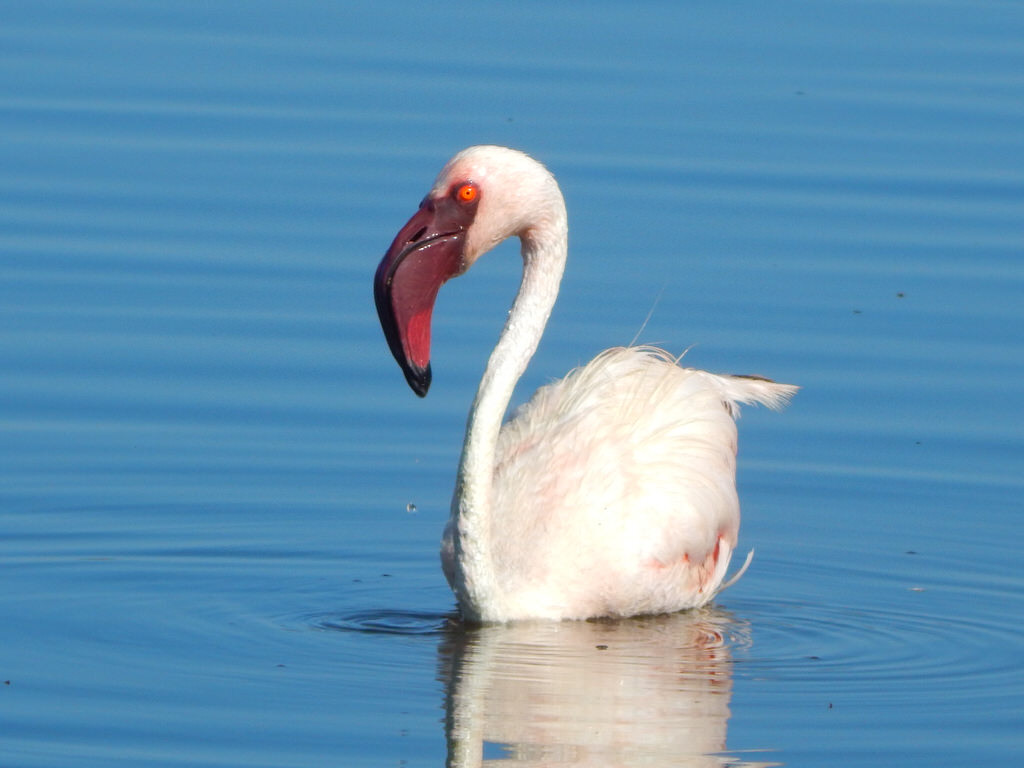
Lake Nakuru is one of the three inter-linked lakes in the Rift Valley Province of Kenya. These lakes are home to 13 globally threatened bird species and some of the highest bird diversities in the world. An absolutely incredible feature of Lake Nakuru is the large gatherings of long-legged, long-necked greater and lesser flamingos.
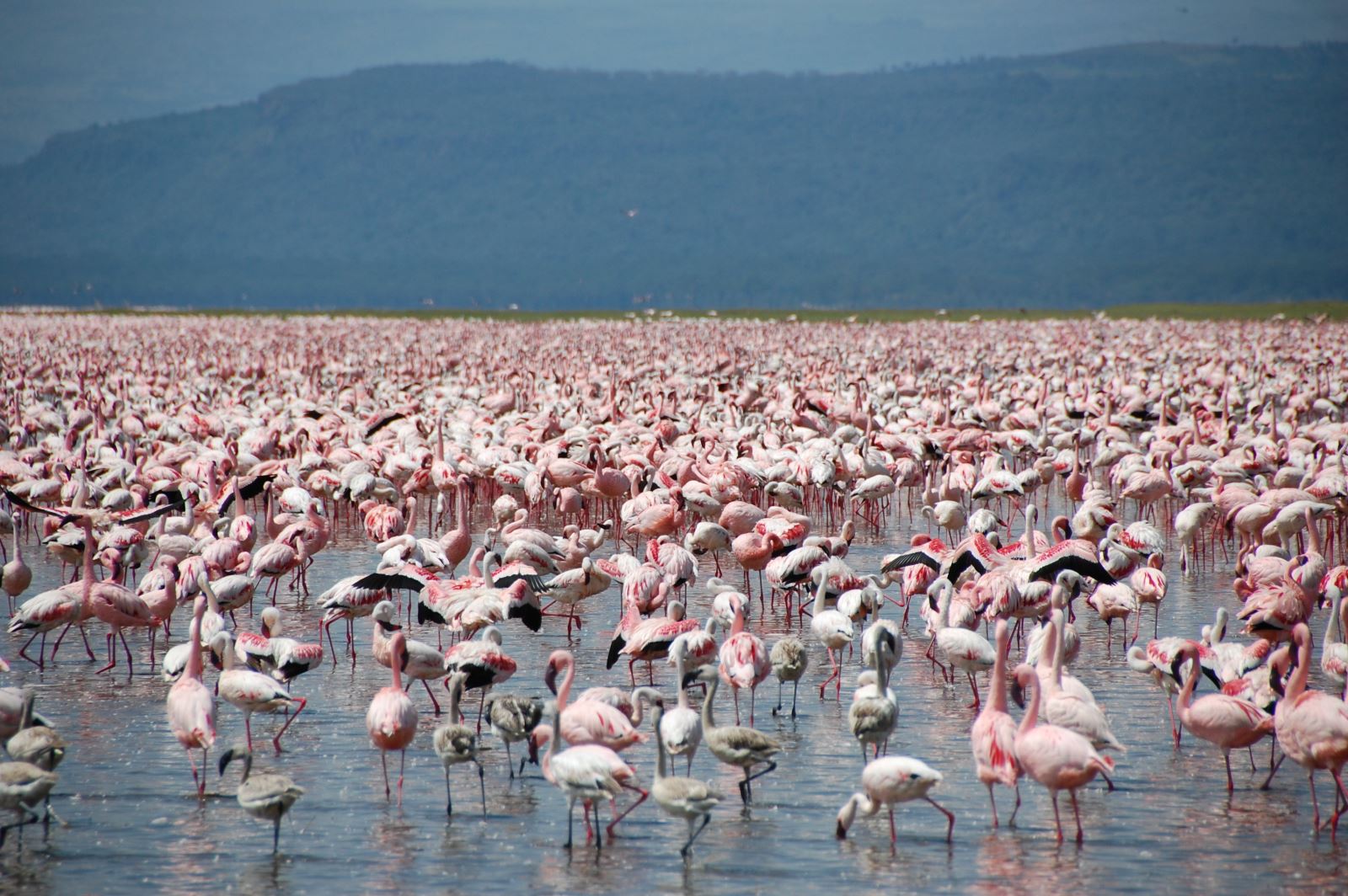
The lake's abundance of algae attracts these birds that famously line the shore. In fact, Lake Nakuru is the single most important foraging site for the lesser flamingo anywhere, and a major nesting and breeding ground for great white pelicans. It has been described by ornithologists as the greatest bird spectacle in the world.
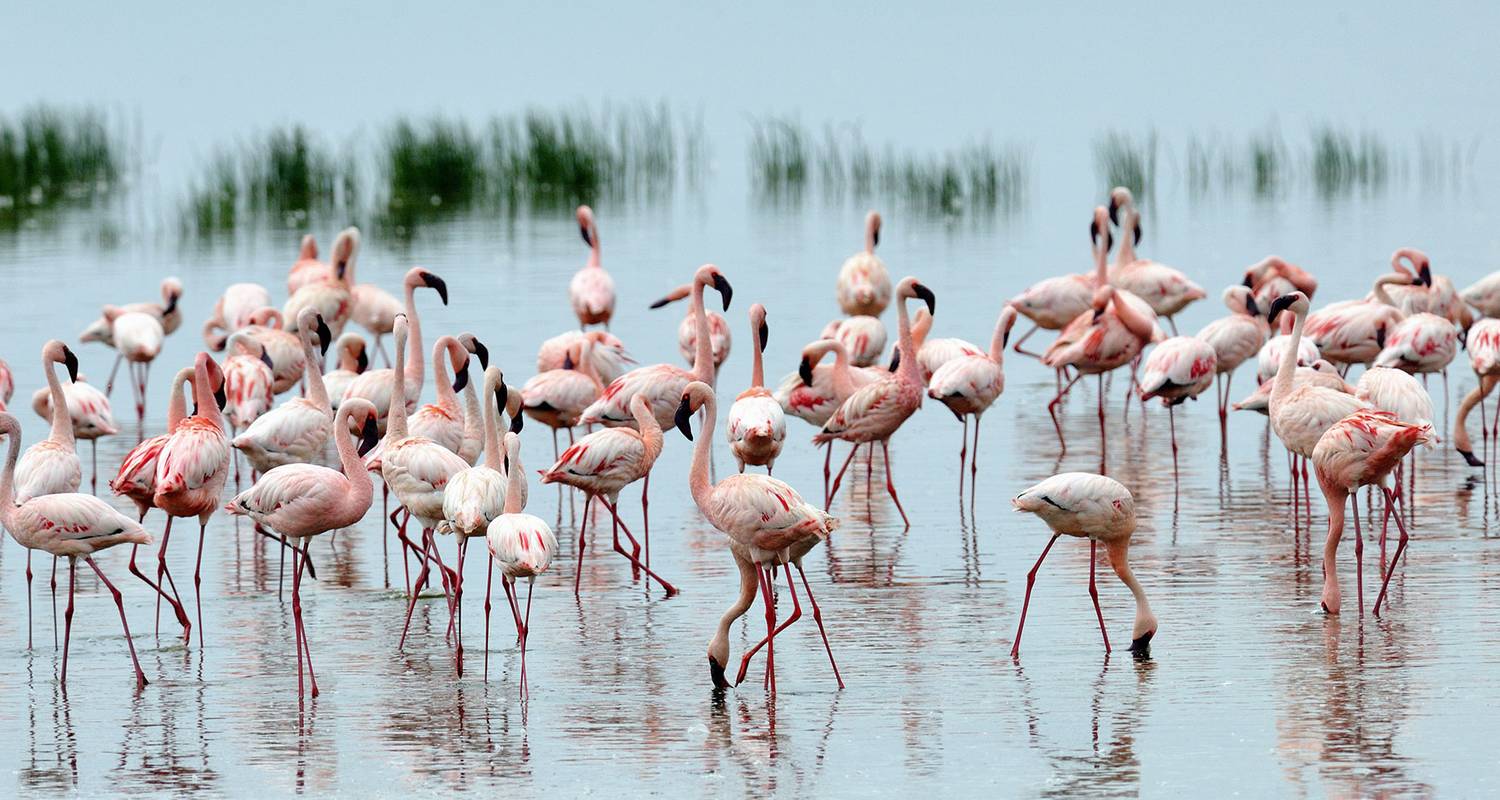
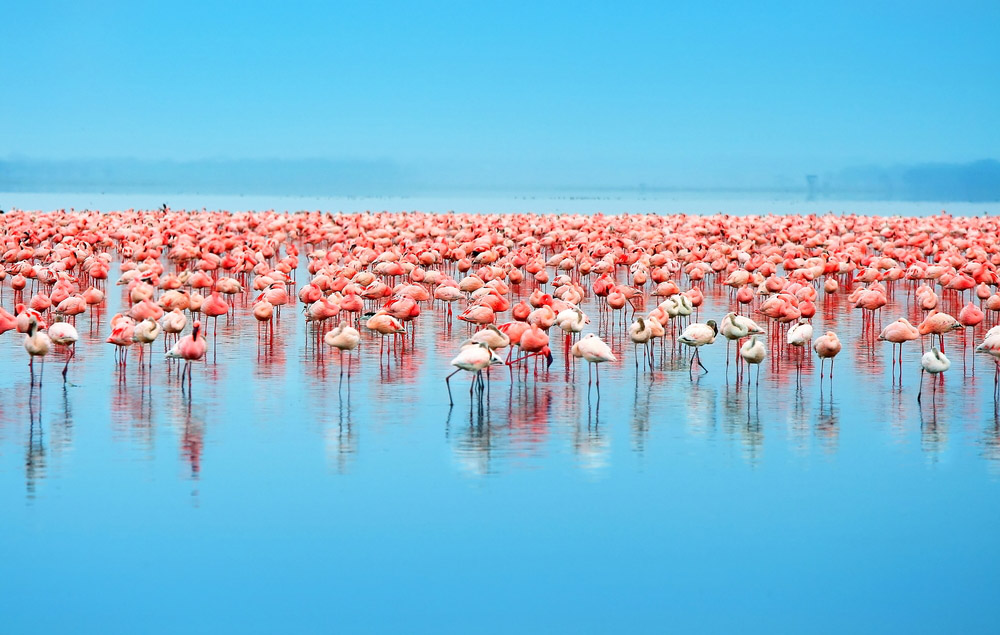
The Lesser flamingo can be distinguished by its deep red carmine bill and pink plumage unlike the greater, which has a bill with a black tip. The Lesser flamingos are ones that are commonly pictured in documentaries mainly because they are large in number.
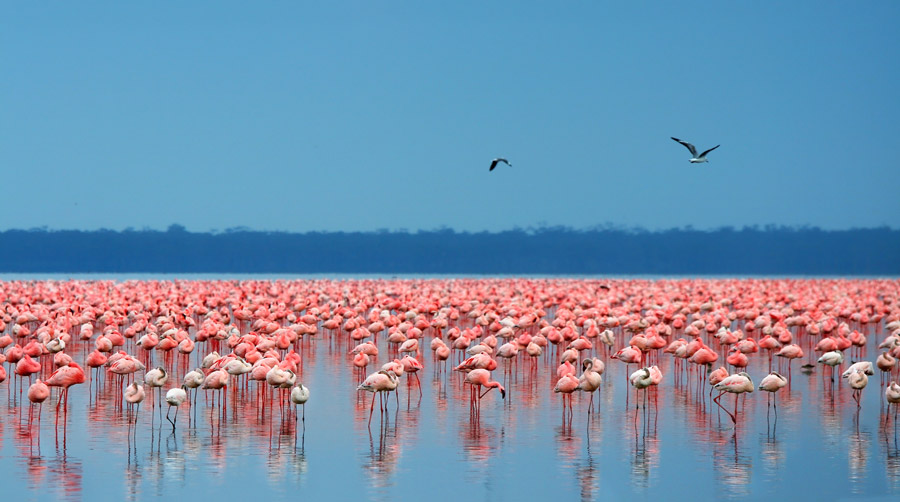
The flamingos feed on algae, created from their droppings mixing in the warm alkaline waters, and plankton. Scientists reckon that the flamingo population at Nakuru, which is often more than a million – or even two million, consumes about 250,000 kg of algae per hectare of surface area per year.
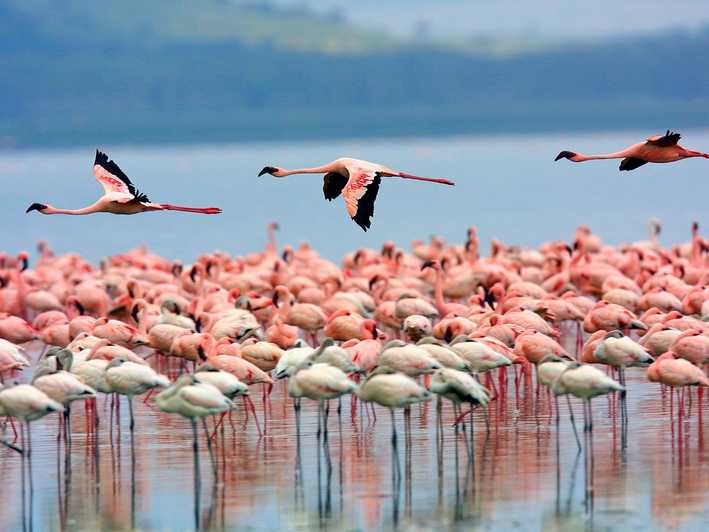
According to Kaushik Patowary. Source: amusingplanet











